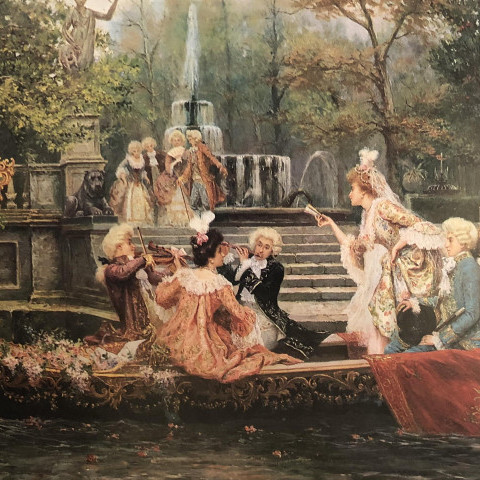Born in Rome, Lorenzo Cecconi was the son of a painting restorer. He studied in Rome at the Accademia di San Luca, under the guidance of Aurelio Tiratelli. He painted, in oil and watercolor, focusing on rural landscapes and figures, such as the Lavandaie di Ceccano, a painting that was exhibited at the Amatori e Cultori Society in Rome in 1886. He preferred the tonal range of greens and grays, to represent the light effect, a little melancholy, of the rain and the overcast sky.
When the stolen Mona Lisa was recovered in 1913, after having been taken from the Louvre some years earlier, Cecconi was called on by the Italian government to examine the picture and ascertain whether it had received any damage, giving Cecconi "a unique opportunity of knowing every detail of the Louvre picture".
In the 1920s, he was loaned by the Italian government to the Indian government, at the request of the Foreign Office in London, to go to India to clean and restore the eighteen temples in the Ajanta Caves, in the Deccan, assisted by another expert, Count Orsini. During his work there he brought to light original Greek frescoes painted over by Indian painters one hundred years after Alexander the Great invaded India.
From his long stay in India to carry out restorations, Cecconi reported studies of oriental taste that he exhibited at the Colonial Exhibition of 1934. He has also participated in exhibitions in Palermo, Naples, Berlin, Vienna, Barcelona and Chicago. He twice won the "Werstappen" landscape prize, offered by the Accademia di San Luca.
Source: wikipedia.org

